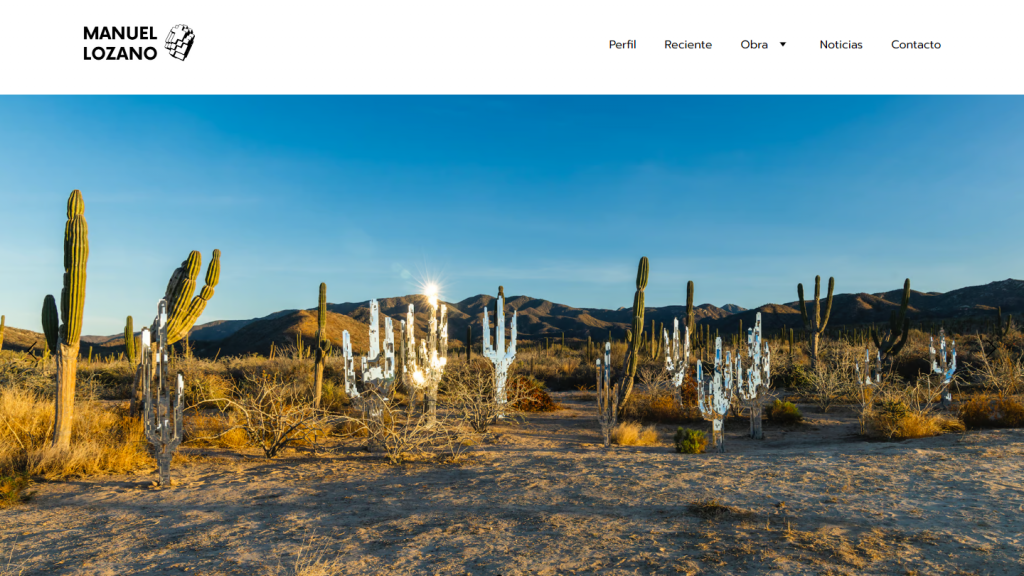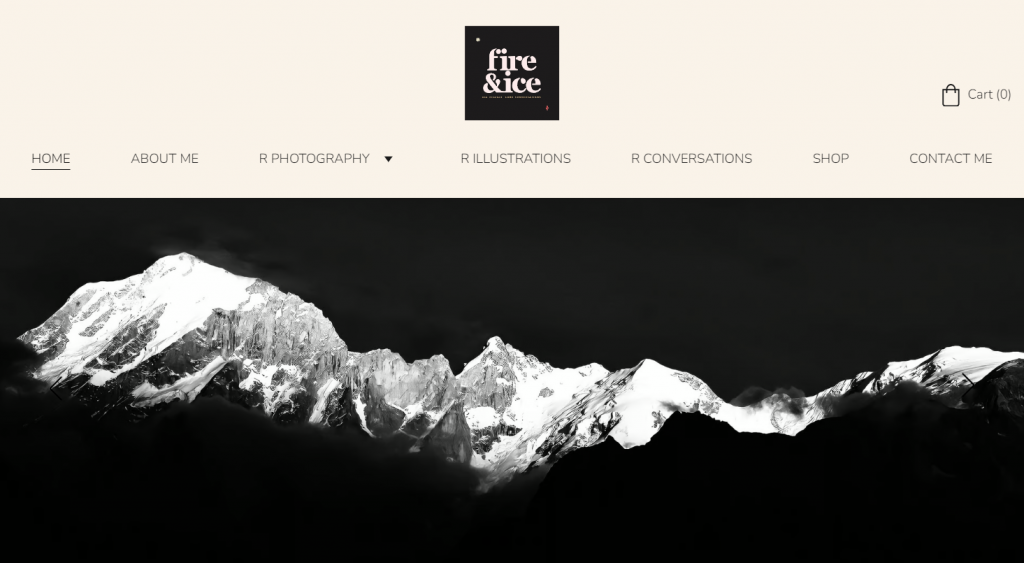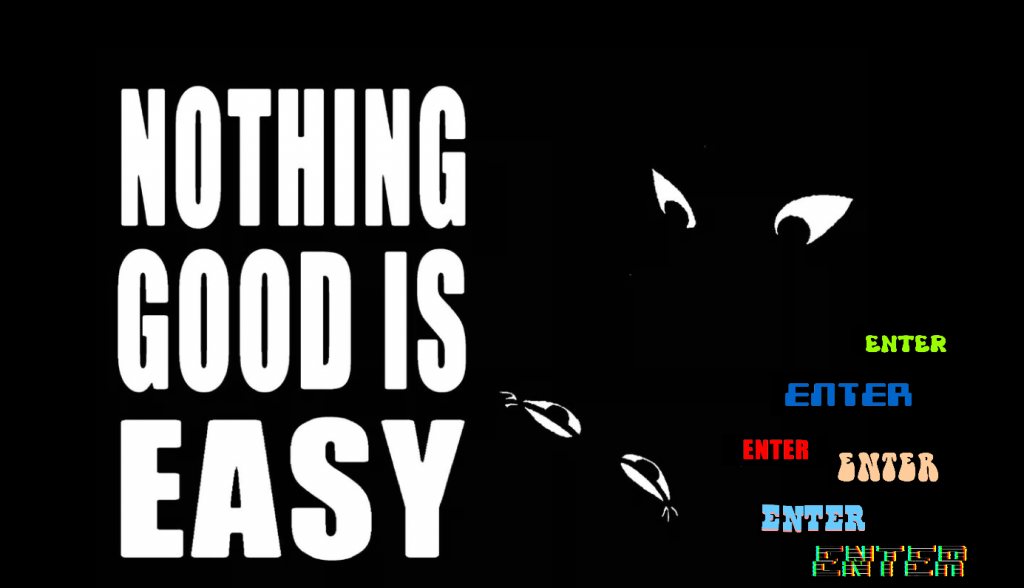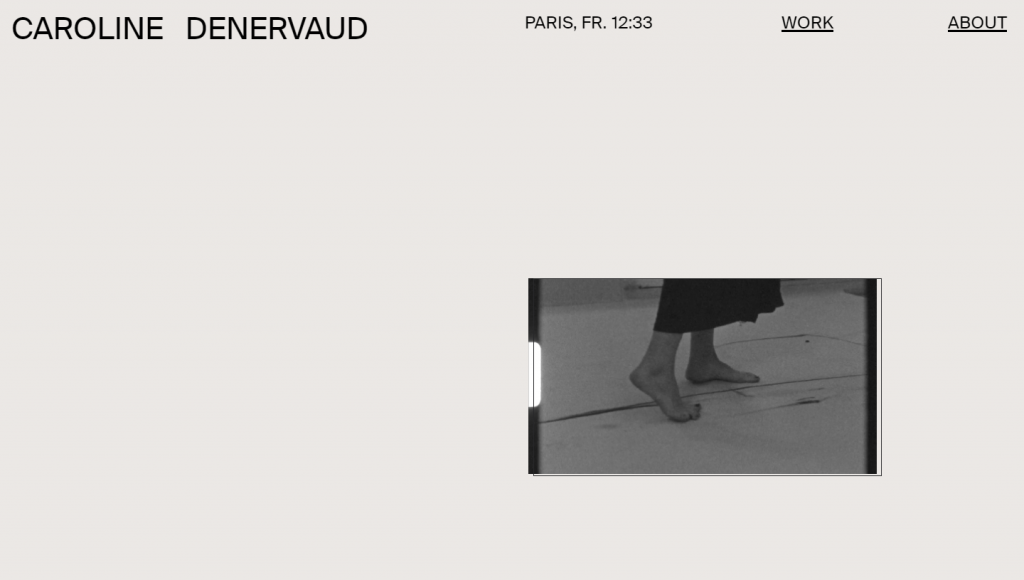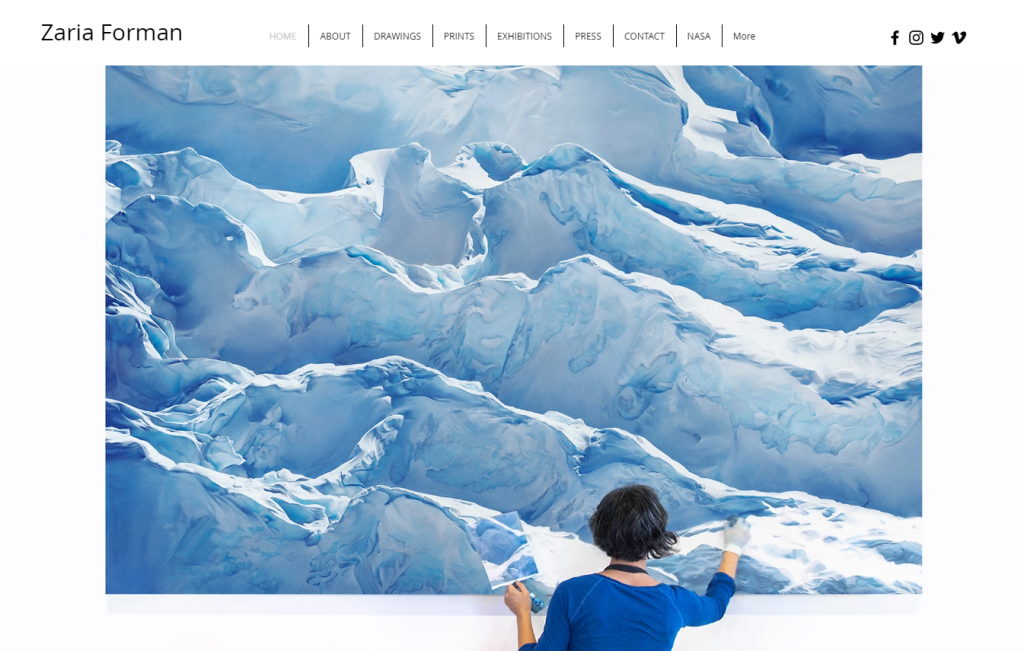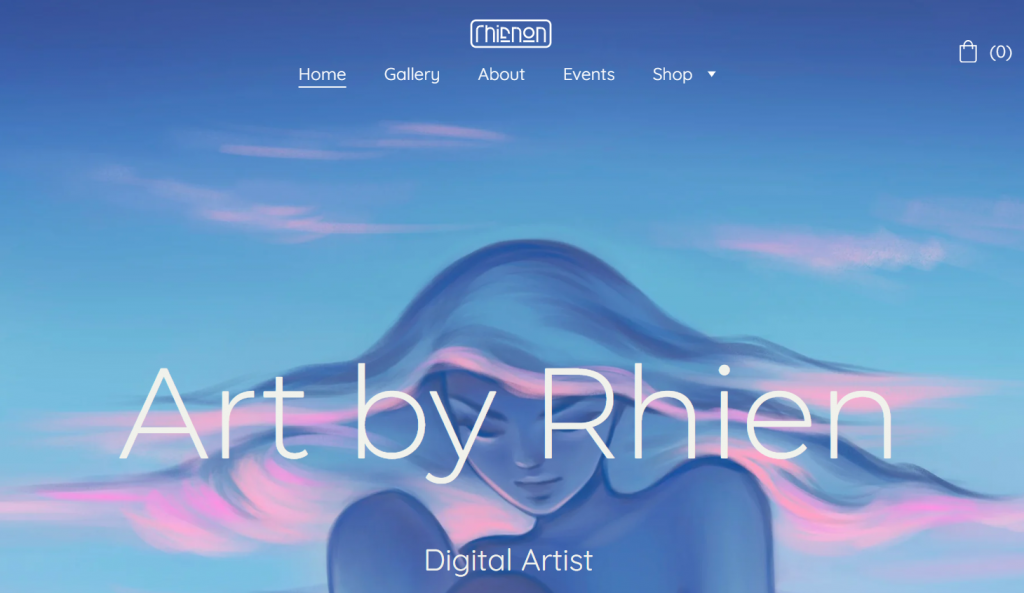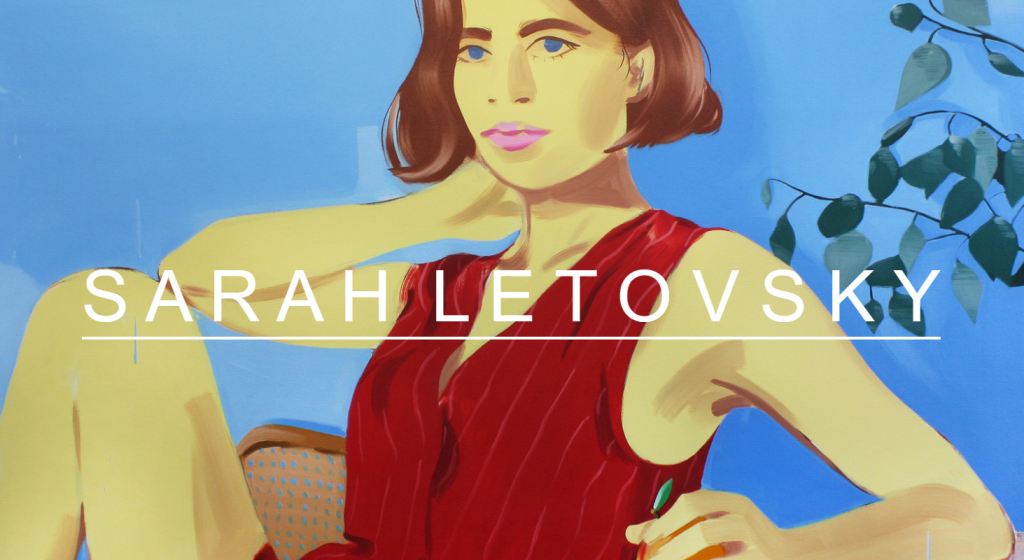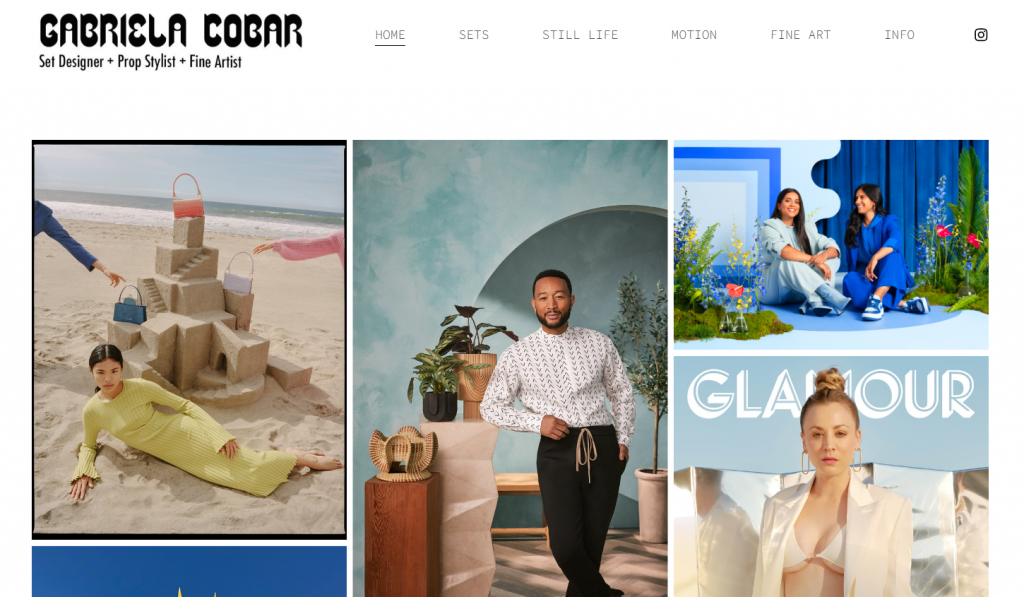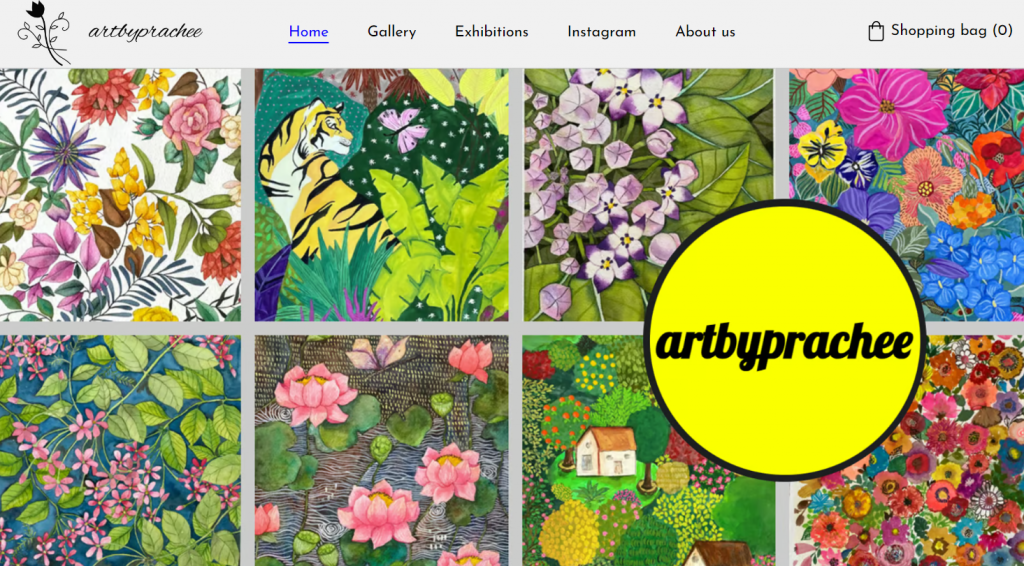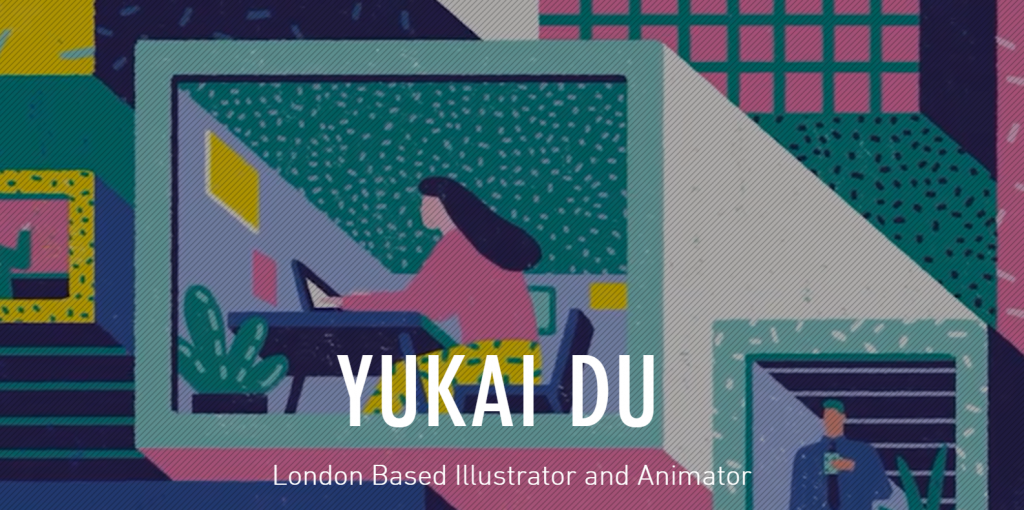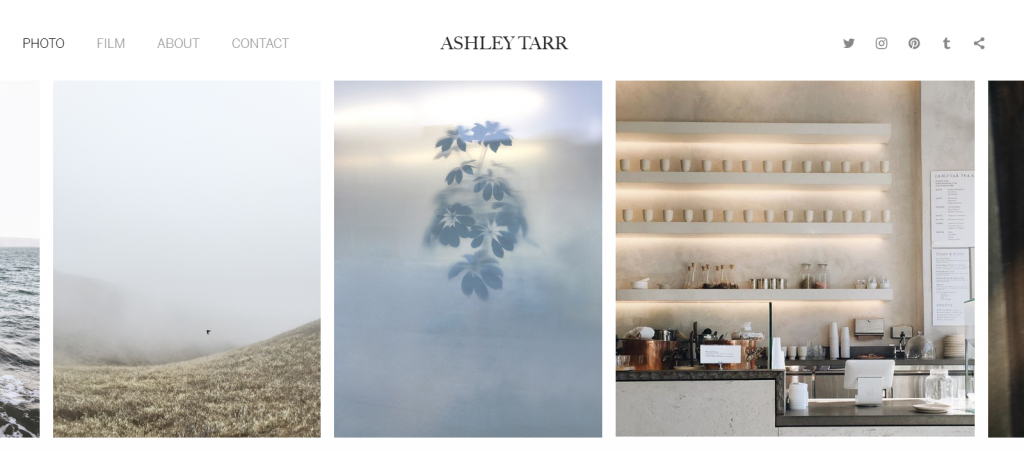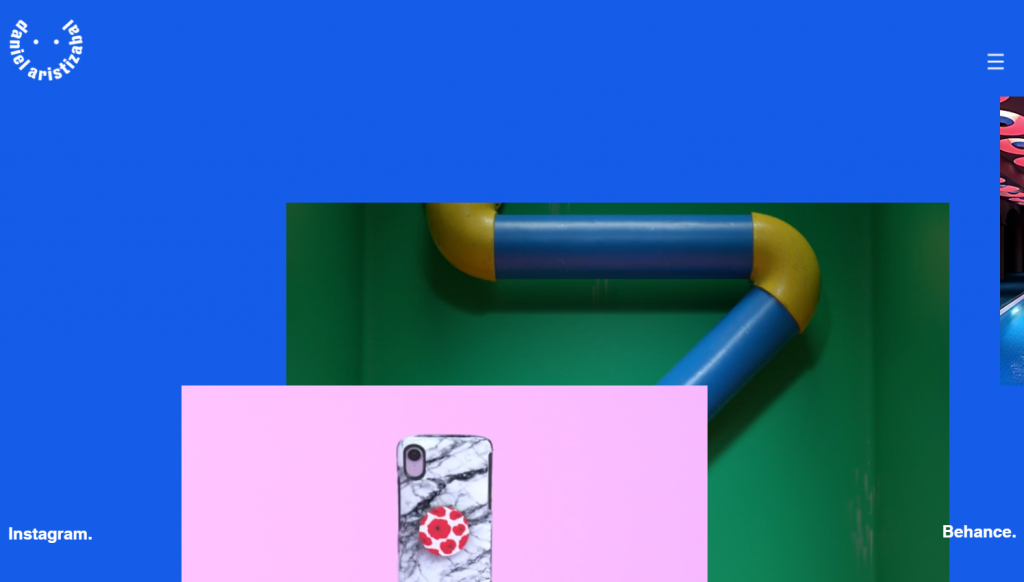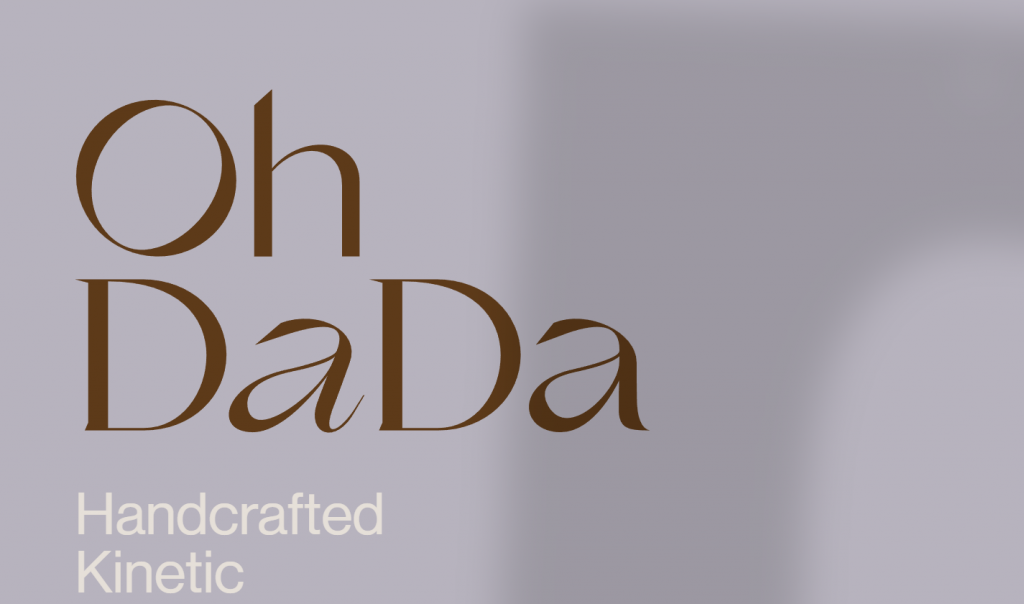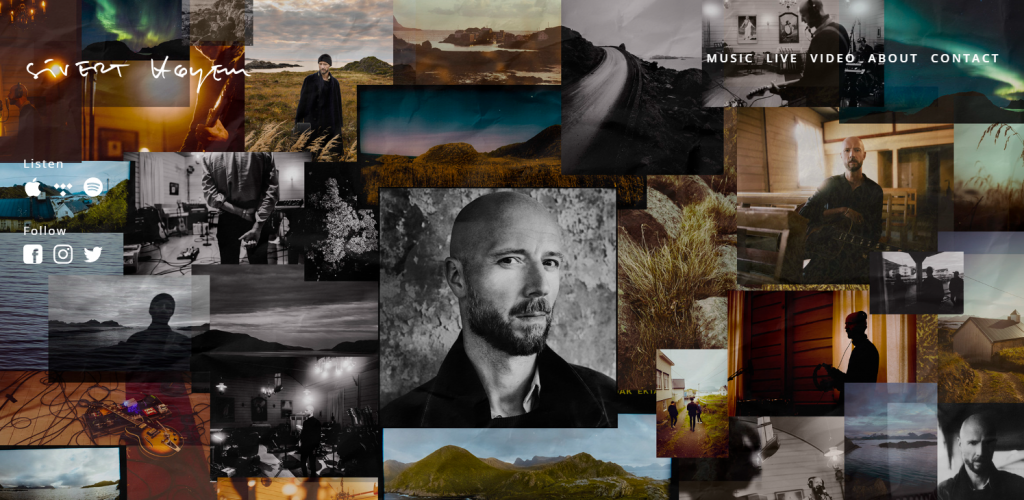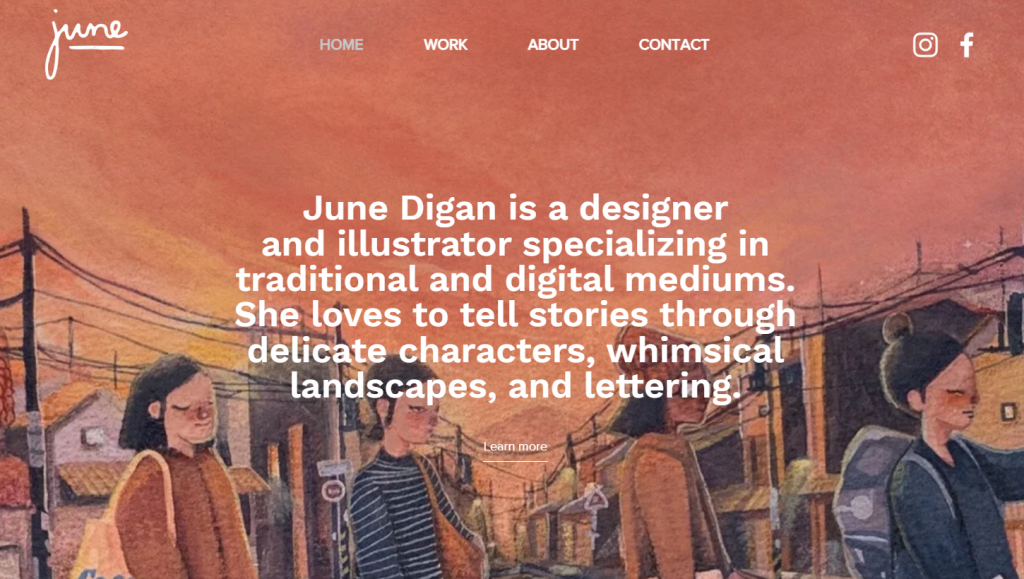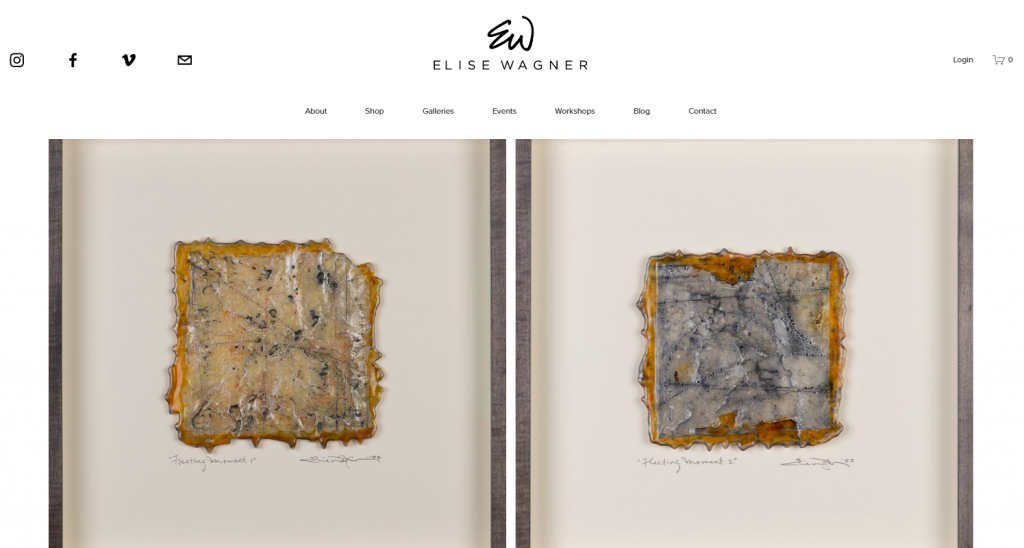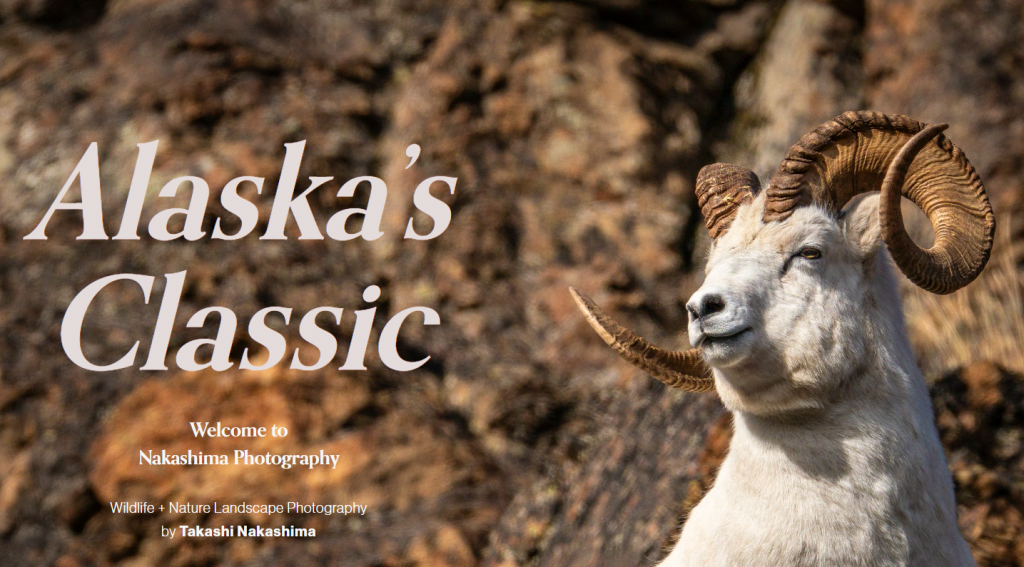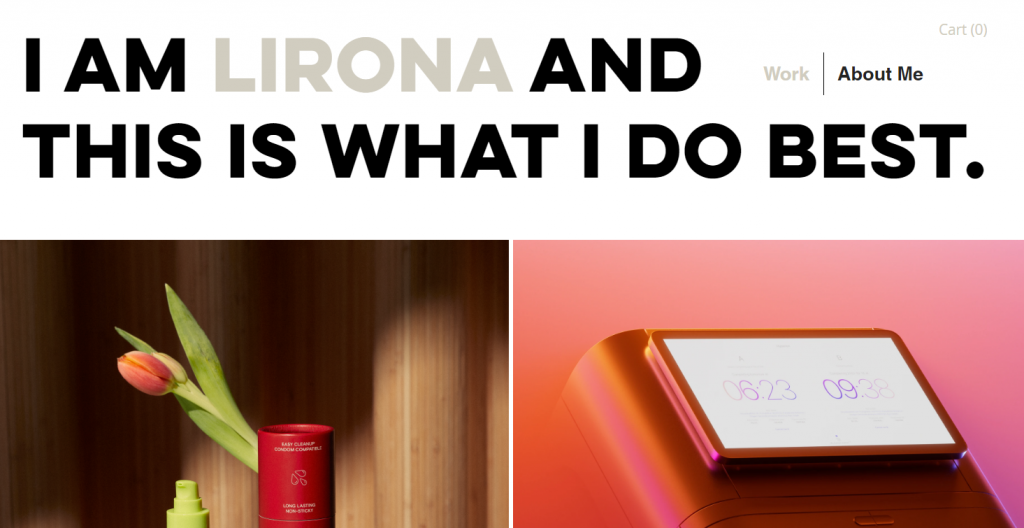Top 19 Art Portfolio Website Examples to Get Inspired in 2024
Having an exceptional art portfolio website is crucial for artists looking to establish a solid online presence and reach a broader audience.
Whether you want to learn how to make a website or seek inspiration for a website redesign, this article is your gateway to the finest examples of art portfolio websites in 2024.
This article aims to provide you with a varied range of approaches, reflecting the latest trends and web design best practices in online art presentations. We’ve considered several factors – the website’s aesthetic appeal, user-friendliness, and how well it represents the artist’s style.
Download website launch checklist
19 Best Art Portfolio Websites
Let’s explore our 19 best art portfolio examples to get inspired by.
1. Manuel Lozano
Manuel Lozano offers one of the best art portfolio examples thanks to its elaborate information.
Built with Hostinger’s portfolio builder, this portfolio website delivers a vivid representation of the artist’s multidisciplinary approach to art. The artist presents the website with a minimalistic theme and features a slideshow of his best works on the homepage.
The portfolio is categorized on a five-year tenure. This chronological arrangement allows visitors to explore Lozano’s artistic journey over two decades, highlighting his growth and experimentation in various mediums.
To help potential collaborators discover the artist’s current style, he incorporates the Recents page as a comprehensive resource of his latest creations. The News page keeps visitors updated on his exhibitions – past and upcoming.
Potential clients can easily contact Lozano through multiple channels, including email, Facebook, Instagram, and WhatsApp. It also includes the artist’s statement, background story, and location directions.
These elements help enrich artist portfolio websites, transforming them from mere galleries into comprehensive platforms that tell a story, explain the artwork, and invite interaction.
Suggested Reading
Learn how to create a digital art portfolio by reading our tutorial.
2. Fire and Ice
Fire and Ice is another great example if you want to build and design your website on Hostinger Website Builder.
The homepage incorporates an automated slideshow effect. By cycling through different images, slideshows can keep website visitors engaged and prompt them to explore further.
Below the fold, it features a welcoming greeting, introducing R. as an artist who enjoys the freedom of creative expression.
Fire and Ice has a contact form, allowing visitors to subscribe to its newsletter and stay updated on the artist’s projects. It also embeds social media links, including Behance in which visitors can engage in conversations.
3. Fett Burger
Fett Burger’s art portfolio website embodies his underground artistry in his roles as an artist, graphic designer, and record producer.
On the homepage, the artist puts together a typography hero, animated creepy eyes, and glitching Enter buttons. The consistent neon-themed design with a black background also helps in setting the edgy tone for the website.
Stay updated on the artist’s upcoming shows, exhibitions, and performances through the Dates page. An archive of past events dating from 2021 to 2023 is also available. Integrating an online store, the artist channels his needs to sell prints, records, and magazines directly from the site.
The Fett Burger artist portfolio is also built on our site builder. These examples demonstrate our platform’s versatility for creating a wide range of professional artist websites in various styles and formats.
For guidance on crafting your own artistic showcase, consider exploring our tutorial on how to make a graphic design portfolio.
4. Caroline Denervaud
Caroline Denervaud offers one of the best art portfolio website examples utilizing minimalist design. The website’s color scheme is a soothing combination of gray and beige. It incorporates plenty of white space, ensuring the focus remains on the visual artist’s work.
On the homepage, the artist presents the site’s title, location, time, and two menu items in a clean format. There’s also a scroll-triggered expanding video which adds a dynamic layer to the browsing experience.
The About page is noteworthy for its depth of information. Site visitors can access a detailed artist bio, including her educational background and press publications. This page also includes a long list of exhibitions, art fairs, and collaborations the artist has participated in.
5. Zaria Forman
Zaria Forman’s digital portfolio is an excellent example of artists who intertwine their creative work with environmental issues.
The site design reflects the artist’s dedication to documenting climate change through drawings, emphasizing the central theme of Earth’s waters and ice. Hence, her paintings tend to use multiple shades of blue.
On the About page, you’ll find a video and a brief journey into the artist’s devotion to the cause. The Exhibitions page successfully showcases the artist’s active engagement in the art world. It underlines her continuous efforts in climate change activism since 2006.
This artist portfolio website offers a unique way to bridge art and activism. Aside from inviting viewers to appreciate her visual arts, Forman entices them to recognize and act upon the urgent environmental issues she represents.
6. Art by Rhien
Also built on Hostinger’s site builder, Art by Rhien beautifully showcases the artist’s focus on dreamy digital portraits. Its homepage features a full-width display of the artist’s artwork, dominated by soft blue and pink shades that evoke a sense of tranquility.
The Gallery page utilizes the grid layout, enabling visitors to overview all artwork at once. Click on the art pieces to expand them and activate an interactive slideshow.
The shopping cart icon on the homepage subtly indicates the commercial aspect of this artist portfolio website. For artists interested in exploring similar opportunities, there are plenty of ways to monetize creative work.
Explore the Shop page to find offerings that go beyond artwork prints. It promotes a diverse range of products – the artist’s own Procreate brush presets, pins, keychains, washi tapes, and sticker packs.
7. Sarah Letovsky
Sarah Letovsky’s art portfolio website mirrors the introspective nature of her work.
The homepage features a title overlaying an oil painting of a woman, a subject central to the artist’s work. Click on the text to access the sidebar menu consisting of Home, Work, CV, and Contact and the artist portfolio content.
The Work page introduces the artist’s oil paint projects. Selecting the I Like for You to be Still project redirects you to a dedicated gallery showcasing this particular series.
On the CV page, the website delves deeper into the artist’s background and the inspiration behind her artwork. This section contains a comprehensive overview of her educational path and experiences in auctions, residencies, exhibitions, fairs, awards, and publications.
8. Gabriela Cobar
Gabriela Cobar’s portfolio website showcases her multifaceted career as a set designer, prop stylist, and fine artist. The homepage incorporates the grid format, inviting visitors to grasp the breadth of Gabriela’s artistry at a glance.
Collaborations with high-profile brands are a significant aspect of this online artist portfolio. She has worked with notable names such as Nike, Fenty Beauty, Reese’s, and Samsung. You can access these brand collaboration details on the Sets, Still Life, and Motions pages.
9. Art by Prachee
Art by Prachee is one more artist portfolio website built on our site builder.
The artist’s use of bold colors and a variety of mediums marks her nature-inspired paintings. The Gallery page is segmented into Original Artworks, Exclusive Artworks, and Wall Plates categories. Each category is linked to the artist’s online shop pages.
This seamless integration of the gallery with the eCommerce aspect helps minimize redundancy. Visitors can browse through the artist’s portfolio and add their favorite pieces to the shopping bag.
The portfolio website also offers comprehensive information about the returns policy, payment options, and delivery details. Such transparency plays a vital role in fostering trust with the audience.
Suggested Reading
Check out our article on The Top 10 Website Builders for 2024 and learn how our platform compares among the best.
10. Grace Blair
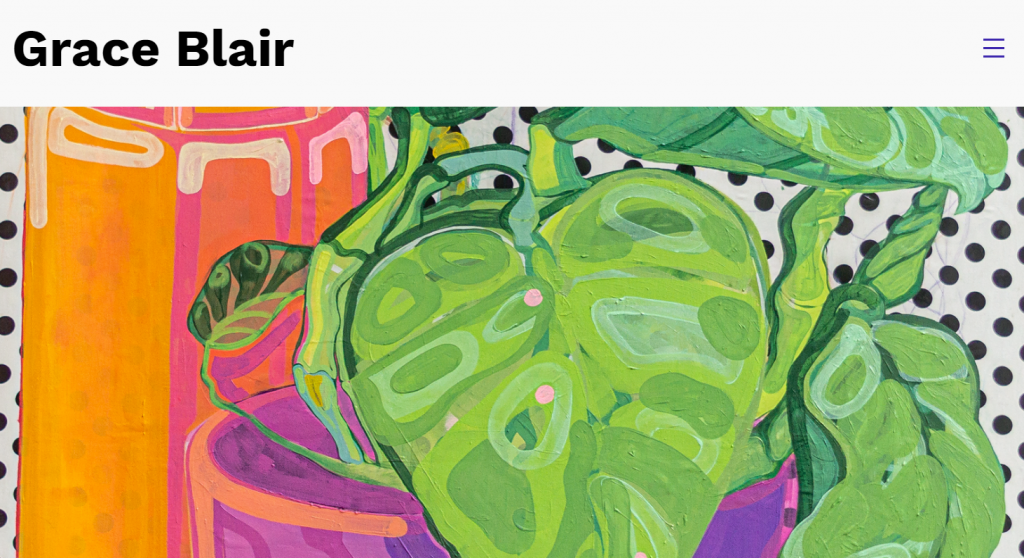
If you’re an art student looking to promote your art online or expecting to step into the job market soon, Grace Blair offers a good art portfolio from which to draw inspiration. This portfolio website showcases the artist’s colorful pieces during thesis and undergraduate studies.
The homepage embraces simplicity with a full-width hero image, the site title, and a hamburger menu. The hero image choice introduces the artist’s focus on combining pop art and iconography.
On the Resume page, Blair provides an artist statement. This page also lists her professional experiences, skills, and contact details. A unique addition to the art portfolio site is the Camera Reel page, which showcases a sneak peek behind her artistic process.
11. Yukai Du
Yukai Du makes illustrations, animations, and GIFs using dots, lines, and geometric shapes. The artist portfolio website captures visitors’ attention using an animation hero. Scroll down the homepage to access the navigation bar and artwork displays in a two-grid layout.
In addition to Animation, Illustration, and GIF, visitors can explore the artist’s Shop page. Here, she promotes her art prints, zines, and wooden boxes. Visitors keen on learning animation can find a dedicated page on the artist’s website for online course sign-ups.
The Contact page layout is simple and clean. There are specific contacts for different regions, which makes it easy for visitors to reach out to the right representative.
12. Ashley Tarr
Ashley Tarr utilizes plenty of white space to showcase her editorial artwork online. This portfolio is different from other artists’ websites due to its infinite horizontal-scrolling web page layout.
Explore the artist’s work by hovering over the Photo and Film menus to reveal categories. This UX design approach helps organize artist portfolio websites to look clutter-free.
Social media links are accessible on the right corner of the artist portfolio. Another way to connect with the visual artist is through emails from the Contact page.
13. Daniel Aristizabal
Daniel Aristizabal chooses the bolder, more interactive design approach for his artist portfolio website.
The art director uses a vivid blue background and simple animations throughout the site. While combining elements can be tricky, this approach helps set an artist portfolio apart from the crowd.
Scroll down the homepage to discover the artist’s diverse projects, including notable works like the Nike art marketing campaign, visuals for Port Magazines, and the Here & Now collaboration. You can click View Projects to access the details.
The Info page contains the artist’s brief yet strong statement. Presentation-wise, it occupies the whole page using a typographic-style design. This delivery style reinforces the artist’s confidence, professionalism, and integrity.
14. OhDada
OhDada is a collaborative project of two graphic designers. The professional artists focus on creating hand-made kinetic sculptures to help potential buyers create soothing home environments.
The OhDada artist portfolio looks like a one-page website. The homepage immediately showcases the designers’ products, has an Instagram link, hosts the About section, and includes contact information.
Clicking on one of OhDada’s products will lead site visitors to the dedicated product page. Here, the artists share the item name, materials, measurement, and price. They also include photos from various angles, helping to convey the texture, size, and details.
15. Sivert Høyem
Sivert Høyem is a singer-songwriter focusing on creating obscure pieces that evoke an eerie atmosphere. The artist successfully puts together a homepage that conveys his songwriting style with a dark-toned image collage.
Another unique element on the homepage is the custom logo that mimics handwriting, adding a personalization touch. It also incorporates music sharing and social platform links to help visitors and potential collaborators get to know him better.
The navigation bar is simple, so browsing through the artist’s pieces, live events, and music videos is easy. This straightforward approach to website navigation ensures a great user experience.
16. June Digan
June Digan’s graphic design and illustration portfolio successfully highlights the artist’s skills in color, composition, and design. The use of gradients is apparent throughout the website design, mirroring the artist’s graphic work and illustration characteristics.
In terms of portfolio display, the artist organizes it based on projects. This approach highlights the artist’s range to adapt to various styles or themes.
The online portfolio website provides details about the artist’s background on the About page. One of the artist’s highlights in her professional career is being a jury for prestigious awards. Including such achievements is a great way to showcase an artist’s recognition in the field.
17. Elise Wagner
Elise Wagner’s artist portfolio website mainly serves as a platform to showcase her abstract paintings. It also provides insights into the artist’s philosophy through a biography, artist statement, publications, and CV on the About page.
Visitors can explore the Workshops page to find information about available sessions. There is also documentation from previous workshops, so those interested in joining can get more details about what they will get from it.
The Blog page is a great addition, as maintaining an active blog is an excellent way to provide a space to spark discussions and build an active community. Here, the abstract painter shares her knowledge and ideas, demonstrating her expertise in the field.
A blog can also boost search engine optimization (SEO). By using relevant keywords and regularly updating content, artists increase their sites’ chances of ranking higher in search engine results and generating quality traffic.
18. Nakashima Photography
The Nakashima Photography portfolio website boasts the natural world’s beauty through the artist’s lens, demonstrating his prowess in photography.
Upon entering this artist portfolio website, you will find Start Here and Japanese buttons.
Click on the former to proceed to the homepage in English, and choose the latter if you prefer exploring in Japanese. This approach works great for professional artists wanting to cater to the local and international communities.
The homepage introduces the artist’s projects, such as the Lynx in Winter story and the Recent Adventures gallery.
On the project pages, the artist not only shares his high-quality images but also often shares reports. Adopt this approach and share your art projects’ interesting background stories with your audience.
19. Lirona
Lirona’s art portfolio website offers a unique approach to highlighting essential elements, starting on the homepage with bold typography that spotlights her name in a contrasting color.
Navigation is kept simple with just two menu options – Work and About Me.
Visitors will arrive in the Work section upon entering the website, indicated by the same gray color as the artist’s name on the header. When they click About Me, the colors switch, another clever way to emphasize the site elements.
Regarding project descriptions, the design director and illustrator write them very comprehensively. For example, on the Sense page, the artist shares not only the visual works but also the behind-the-scenes.
This level of insight illustrates how each element, from color choices to shapes, is deliberately selected to convey specific messages or emotions. It highlights the artist’s dedication to her craft and underscores her commitment to the conceptual aspects of her creations.
Suggested Reading
Discover more portfolio website examples and create a lasting impression on your potential customers, collaborators, or employers.
What to Include in an Art Portfolio Website
Building a user-friendly portfolio website is crucial for showcasing your artwork to the world. It serves as a digital gallery where you can exhibit your creativity and skill. To help you create a standout portfolio, here are some key elements to include:
High-Quality Images of Your Artwork
Ensure your artwork makes the right impact by using high-resolution images that accurately depict the details of your work. If you’re photographing your artwork, do so in natural light to avoid shadows and reflections. For digital creators, high-quality files are essential.
Hostinger Website Builder aids in media file optimization by compressing images as you upload them. This feature ensures fast loading times without sacrificing visual quality. Optimized images also help improve mobile responsiveness. The mobile user experience is vital, as 66.02% of the web traffic is from mobile devices.
In addition to image optimization, uploading only a handful of your best pieces is an excellent strategy for better engagement. Focusing on quality also ensures that each showcased work effectively represents your skills and artistic vision.
Artist Bio
Your bio lets your audience connect with you and your artwork on a personal level. Here are some tips for an excellent bio:
- Write a compelling narrative that includes both personal and professional details.
- Share your artistic journey, inspirations, and what drives your creativity.
- Keep it concise but engaging, allowing visitors to feel a personal connection to you as an artist.
Contact Information
Having accessible contact information on your website is crucial for easy communication with potential clients, collaborators, or fans.
Key elements include a user-friendly contact form, direct email links for personal email communication, links to social media profiles for engagement, and regularly updated contact information.
Our site builder platform facilitates easy integration of these elements. On the site footer, you can find pre-designed social buttons, making editing easier. Regarding the contact form, you can easily create it by navigating to Add element → Contact form.
Artist Statement
An artist’s statement provides insight into your work. It should reflect your artistic vision and style, explaining the concepts and themes you explore in your art. Keep it clear and concise, allowing visitors to understand the intent behind your work and what sets it apart.
Exhibition History and Achievements
Showcase your professional accomplishments by listing your exhibition history, awards, or recognitions. This section not only builds credibility but also gives visitors an overview of your career progression.
You can organize this information thematically or chronologically, depending on what best highlights your artistic journey.
Online Store Integration (Optional)
For artists looking to sell their work directly, integrating an online store into your portfolio can be a game-changer. An eCommerce functionality helps you reach a wider audience and have complete control over sales.
Our site builder can assist in setting up a user-friendly eCommerce platform, making it easy for visitors to purchase your art directly from your site.
Conclusion
A well-structured and beautifully designed art portfolio website is a powerful tool for both professional and aspiring artists. In addition to showcasing your work online, an art portfolio tells your story, builds your brand, and can even facilitate the sale of your art.
Here are our top picks of best artist portfolio examples for 2024:
- Manuel Lozano – exemplifies best practices in website design with a minimalistic theme and a slideshow showcasing his best works. It also includes a comprehensive resource of his work and multiple contact channels for potential collaborators.
- Zaria Forman – offers a prime portfolio example of artists bridging art and environmental concerns. This website invites viewers to appreciate her visual arts and recognize the urgent environmental issues she represents.
- Ashley Tarr – stands out with its use of white space and infinite horizontal-scrolling layout. Explore her artwork by hovering over the menus to discover different categories. The clean UX design keeps the portfolio clutter-free.
- Elise Wagner – offers comprehensive details on workshops and documentation from previous sessions. This online portfolio also incorporates a blog, providing a space to highlight the artist’s expertise, spark discussions, and build a community.
- Lirona – showcases a unique approach to highlighting essential elements. Project descriptions also offer comprehensive insights, going beyond visuals to reveal the artist’s dedication and commitment to her craft.
Don’t forget to include important information, such as a bio, contact details, and professional achievements. You should also upload high-quality images to portray your work accurately.
We hope you find this article helpful in creating your own online portfolio and taking your art career to new heights. Good luck!
Art Portfolio Website FAQ
Below are some frequently asked questions about building an art portfolio website to help guide you through the process:
What Is an Art Portfolio Website?
An art portfolio website is a digital platform where artists showcase their work, tell their stories, and connect with audiences. It functions like a virtual gallery, displaying high-quality images of artwork, artist bios, statements, and possibly an eCommerce feature for selling art directly.
Which Website Builder Is the Best for a Portfolio Website?
Hostinger Website Builder is your best bet. With our user-friendly interface, customizable creative templates, and AI-powered tools, you can build your portfolio website and share your work with global audiences in just a few clicks.
How to Make an Art Portfolio Website?
To create an art portfolio website, start by selecting a site-building platform. Then, organize your artwork, write a compelling artist bio and statement, and choose a design that helps your art shine. Remember to optimize images for web use and ensure your contact information is accessible.
